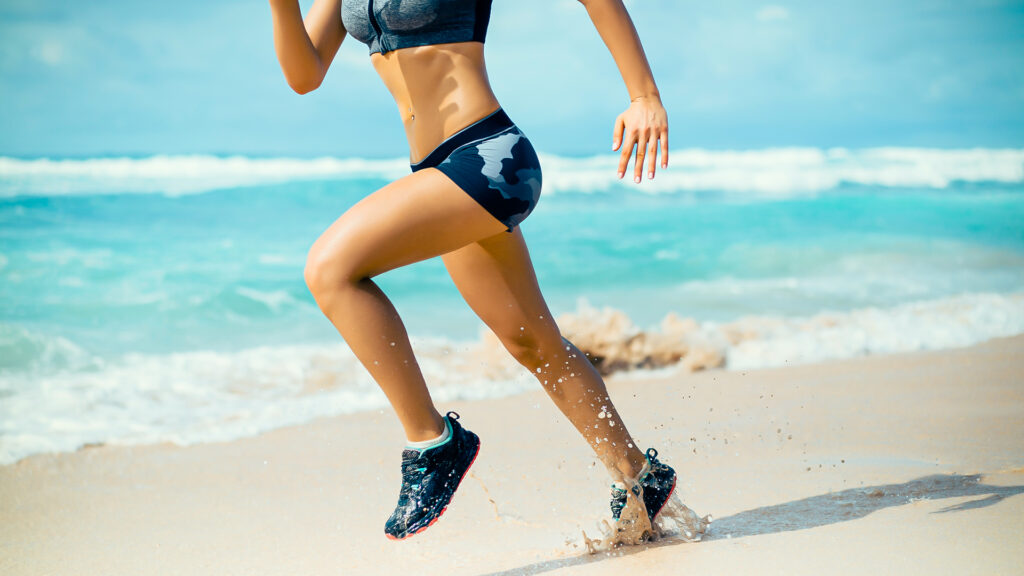3 Benefits of Running on the Beach
Running on sand affects the body differently than running on pavement. The uneven surface of the sand requires more effort from your lower body muscles, which can lead to increased muscle strength and endurance. Additionally, running on the beach can provide a low-impact workout, reducing the impact on your joints compared to running on hard surfaces.
Improved Cardiovascular Health
Running on the beach can also improve cardiovascular health. The added resistance from running on sand makes your heart and lungs work harder, leading to an increase in cardiovascular fitness. The combination of cardiovascular exercise and the natural elements of the beach can provide a more challenging workout than running on pavement.
Strengthening Lower Body Muscles
Running on the beach can strengthen your lower body muscles, including your quadriceps, calves, and glutes. The soft sand requires more effort from your muscles to push off and maintain stability, leading to a greater muscle workout than running on pavement.
Reducing Impact on Joints
Running on the beach can reduce the impact on your joints, making it a good option for those with joint pain or injuries. The sand absorbs some of the impact of each step, reducing the force on your joints compared to running on hard surfaces.

Potential Risks of Running on the Beach
While there are many benefits to running on the beach, there are also potential risks to consider. The unstable surface of the sand can increase the risk of injury, particularly to the ankles and feet. Common injuries associated with running on the beach include sprains, strains, and blisters.
Minimizing Injury Risk
To minimize the risk of injury, it’s important to take some precautions. Wear proper footwear with good ankle support to prevent ankle sprains. Start with shorter runs and gradually increase your distance and intensity to allow your body to adjust to the uneven surface. Stretch before and after your run to prevent muscle strains, and make sure to stay hydrated to prevent cramps and dehydration.
Best Practices for Running on the Beach
To get the most out of your beach running experience, it’s important to follow some best practices. Wear proper footwear with good ankle support and a solid grip to prevent slipping. Start with shorter runs and gradually increase your distance and intensity. Use your arms to maintain balance and stability, and adjust your stride to the softer surface. And, of course, make sure to stay hydrated, as running on the beach can be more physically demanding than running on pavement.
Beach Running as a Training Tool
Beach running can also be a valuable training tool for other sports. The added resistance and muscle workout can improve performance in other activities, such as running on pavement or playing sports like soccer or basketball. Incorporating beach running into your training routine can help you build endurance, strengthen your muscles, and improve your overall fitness level.

FAQs
Is it safe to run barefoot on the beach?
While it may seem tempting to run barefoot on the beach, it can increase the risk of injury to your feet, including cuts, scrapes, and burns from hot sand. It’s recommended to wear proper footwear with good ankle support and a solid grip to prevent slipping and injuries.
How often should I run on the beach?
The frequency of running on the beach depends on your fitness level and goals. It’s important to gradually increase your distance and intensity, starting with shorter runs and building up to longer distances. It’s generally recommended to incorporate beach running into your workout routine a few times a week.
Should I stretch before beach running?
Stretching before any physical activity can help prevent injury and improve flexibility. It’s recommended to perform a warm-up, including dynamic stretching, before beach running. After your run, it’s also important to stretch to prevent muscle soreness.

What should I eat before a beach run?
Before beach running, it’s important to fuel your body with the right nutrients. Aim for a balanced meal with a mix of carbohydrates, protein, and healthy fats, such as a whole grain toast with nut butter and a banana. It’s also important to stay hydrated by drinking plenty of water before and during your run.
Can I run on the beach with a pre-existing injury?
It’s important to consult with a doctor or physical therapist before running on the beach with a pre-existing injury. Running on the uneven surface of the sand can increase the risk of aggravating an injury, and it’s important to take proper precautions to prevent further damage. It may be recommended to modify your workout or avoid beach running altogether until the injury has healed.


Recent Comments